Enjoy the unique coffee scenery of Pu'er
I get up on time at 6 o'clock every morning, drink a cup of coffee and go out to start the day's work. At 07:30 I will drive the green Cherokee familiar to farmers and hover over the mountain road in Pu'er area of Yunnan Province. Although there is always hot flashes unique to the tropical mountain monsoon climate in the airtight car, it takes two hours to get to the nearest village, and the lonely and repetitive itinerary is unbearable, but there is always unspeakable excitement and excitement for me. And I enjoy it all the time. Because I really love rural life and enjoy the unique coffee scenery in Yunnan.
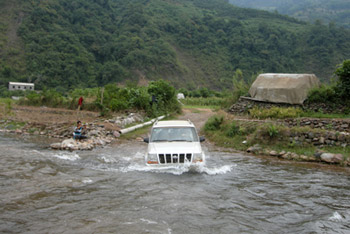
More than a hundred years ago, there was not a coffee tree in Yunnan. The earliest kind of coffee was introduced by French missionaries in 1902. Up to now, there are still 24 coffee trees more than 90 years old in Zhukula Township, Binchuan County. If you are a real coffee lover, don't miss this rare "antique coffee tree" scenery when you come to Yunnan. In 1914, the border people of the Ruili Jingpo nationality introduced coffee from Burma to Nongxian Village. More than a hundred years later, the cultivation and output of coffee in Yunnan accounted for more than 98% of the country's total, becoming a raw material base for high-quality coffee in China and a hot product in Europe, the United States, Japan and other international markets. Yunnan coffee is mainly distributed in the Nu River and Lancang River valleys, where the clouds are shrouded all the year round, and the mountain roads are rugged and dangerous. it often takes hours to cross the mountains to reach the coffee garden. But it is such a difficult journey that makes the coffee scenery in front of me more distinctive and rich and beautiful, and the coffee fruit covered with branches seems to be the best reward for us coffee practitioners who are not afraid to bear hardships.
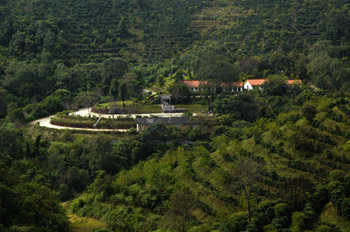
When we carried out coffee cultivation in such an area, we were fortunate to encounter a lot of beautiful scenery, as well as many difficulties and challenges. Not only do I need to have skilled driving skills in order to drive an SUV over the mountains in this mountain area with a relative height of up to 3000 meters. And in many cases, it is necessary to walk to reach the more remote coffee plantations, even using all the modes of transportation that local residents can come up with. When my Chinese partner, Hou Jiazhi, and I travel around to visit farmers in remote villages, I carry with me a complicated "coffee map" that records the names and information of coffee growers to be developed, familiar farmers, and the footprints my father has walked. With the deepening of our exploration, this "coffee map" records more and more place names, but also leads us to appreciate more unique cultural scenery.
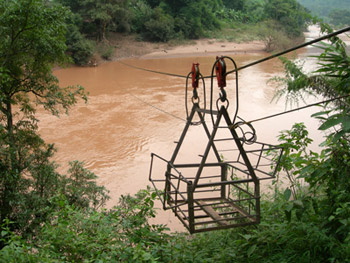
When we visit an inaccessible place, there is always a feeling that we have stumbled into the secret world. People often have to admire remote places with unique scenery, where people still live in ancient and beautiful courtyards, growing traditional crops such as sugar cane and rice to make ends meet. Although they intend to introduce coffee as a new cash crop, or have tried to grow coffee, they always fail because of their lack of knowledge of coffee cultivation. Our timely visits and continuous training and technical support will help them out of their difficulties and put them on the road to becoming rich. All this is the significance of our journey through mountains and rivers to overcome all kinds of difficulties.
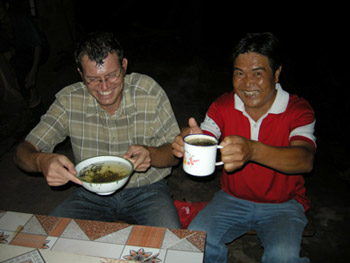
Now, as long as you walk in the Dai village in Pu'er area of Yunnan, coffee trees can be seen everywhere. The strong sun on the red earth plateau can not stop farmers from working hard in the coffee garden, and the narrow and muddy village road can not stop Nestl é's coffee planting skills from entering every remote and relatively backward village. If it were not for the strict discipline of the company, I would have been robbed by the farmers in the village to eat and drink at home every day. Nestl é stipulates that we cannot eat a mouthful of rice or drink a mouthful of water, so when we train curry farmers, go to the fields to see coffee trees, or help solve some coffee-related problems, we always eat at our own expense. All the training and consultation we do is free.
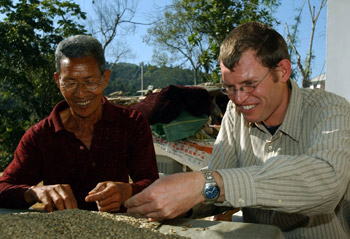
The end of September is the prelude to the busy harvest season for local farmers. It is the harvest season for traditional crops, such as rice, corn, bananas and, of course, coffee. Wherever you go, you can see the busy harvest in the field, with fresh coffee beans drying everywhere. In remote areas, all these production activities also use traditional methods, including livestock transport in the production process. Therefore, in the coffee purchase season, we can often see farmers driving carts and oxcarts, carrying high-quality small seeds of coffee beans to the Nestle Coffee purchase Station, which has also become an eye-catching and unique scenery of the season.
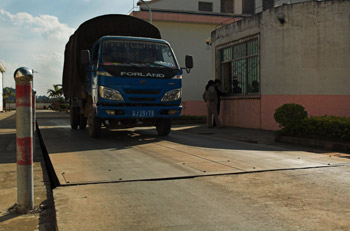
There is a luxuriant coffee tree next to our office building, which was planted by ourselves when Nestle Coffee Agronomy Station entered Pu'er. I can see the fruit of this tree in the kitchen of the office. It is very attractive green and red. I will dry the coffee fruits outside and use them to grind my own coffee to my closest friends, the farmers, to share the precious mellow aroma of our hard work. Pu'er, in this land named after tea, coffee took root and sprouted. In Yunnan's vast tropical rain forest and alpine forest landscape, the coffee garden has become a rare and most beautiful scenery.
Important Notice :
前街咖啡 FrontStreet Coffee has moved to new addredd:
FrontStreet Coffee Address: 315,Donghua East Road,GuangZhou
Tel:020 38364473
- Prev

The hometown of tea and coffee in Luye Gaotai
Visit Longtian Butterfly Village in Longgu, Huadong, you can visit Luye Gaotai tea area, visit tea gardens and tea factories, and arrange to stay in tea gardens, taste honey-scented red leaves or Luye coffee, and feel the customs of Luye tribe and industry.
- Next
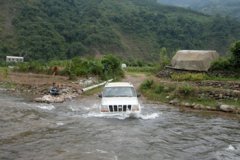
Enjoy the unique coffee scenery of Pu'er
Yunnan coffee is mainly distributed in the Nu River and Lancang River valley, where the coffee scenery and richness and beauty, the coffee fruit covered with branches, seems to be the best reward for us coffee practitioners who are not afraid of hardship.
Related
- How did the Salvadoran coffee industry develop in Central America?
- What exactly does the golden cup extraction of coffee mean?
- The Origin of Coffee flower
- [2023 Starbucks World Earth Day] there are more meaningful things besides free Starbucks coffee!
- What kind of coffee is there in Spain? 9 Flavors of Spanish Coffee
- Aromatic African coffee| Kenya's coffee culture and historical production area
- Liberica Coffee Bean knowledge: the characteristics of Liberian Coffee beans of the three original species of Coffee beans
- The origin and formula of Spanish latte introduces the taste characteristics of Bombon coffee in Valencia, Spain.
- How to adjust the solution of over-extracted coffee
- What is the tasting period of coffee beans? What is the period of coffee and beans? How should coffee wake up and raise beans?

